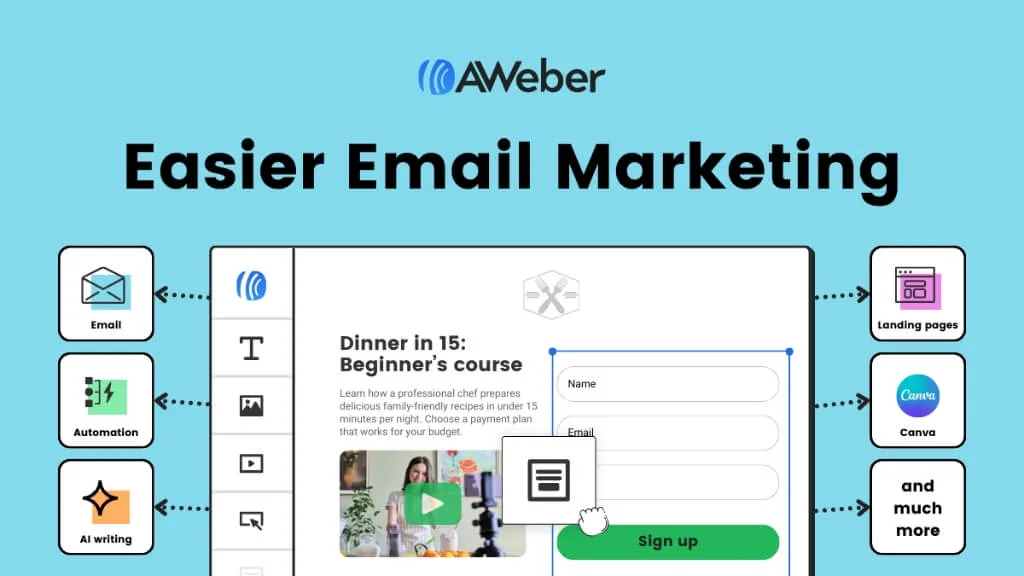Last updated on January 19th, 2025 at 01:27 pm
Affiliate marketing is a wild ride of changing algorithms, shifting trends, and fierce competition. But the best marketers know how to adapt and prosper despite the chaos, embracing the tenth and final principle in our Positivity Mantra series… I am yielding.

Two meanings of “yield” are addressed here—you’ll find that it isn’t just a term for farmers! The first is about yielding to changes, like a tree bending in the wind, with marketers shifting their strategies to keep up to speed. The second? Well, that’s all about the fruit—the profits or returns from your efforts. In other words, the money!
Get ready to learn how to negotiate challenges, pivot with purpose, and cultivate a business that consistently yields profits. You’ll find that mastering the art of adaptation is crucial for prosperity in this game. One yields the other. So, if you’re ready to bend like bamboo rather than break like a twig, let’s begin!

How to Adapt for Success: Essential Strategies for Affiliate Marketers
Affiliate marketing is like a puzzle; each piece will find its place with time and experience, like discovering your optimal location in a town’s market. However, a static approach doesn’t cut it because online and commercial landscapes continually evolve. We must maintain our focus because market dynamics, consumer behavior, and algorithm changes will throw curveballs that demand a nimble stand.
We must transition our strategies when facing roadblocks or pursuing new opportunities, but with patience and structure, it will all click together. Affiliate marketers who remain rigid in their ways often find their profits dwindling.
On the other hand, marketers who embrace adaptability continually renew their success, staying steps ahead of the ever-changing online marketplace. You can join those successful marketers by yielding to the economy’s momentum and making changes when needed.

Recognizing When It’s Time for a Change
As an affiliate marketer, your intuition is your most valuable tool. However, you also need to keep a close eye on the data coming in, which is why monitoring your site’s performance and understanding key performance indicators (KPIs) are essential. Here are some signs that it might be time to reassess your strategy:
- Declining Traffic: If you’re seeing a consistent drop in website traffic or engagement on social media, it’s time to investigate why.
- Decreasing Conversions: Are fewer visitors clicking your affiliate links or making purchases? This could signal a disconnect between your content and your audience’s needs.
- Algorithm Updates: Search engines like Google frequently change their algorithms. You may need to adjust your SEO strategy if your rankings drop suddenly.
- Emerging Trends: Keep an eye on your niche. Are new products, platforms, or strategies gaining traction? If you’re not keeping up, you could miss out on opportunities.
- Competitor Analysis: Are your competitors outperforming you? Look at their strategies and see if there’s anything you can learn or adapt to in your approach.

Learning the Lingo: Key Performance Indicators (KPIs)
KPIs are the measurable values that help you track your affiliate marketing progress and gauge the effectiveness of your strategies. Here are some of the most important KPIs to monitor:
- Click-Through Rate (CTR): The percentage of people who click on your affiliate links after seeing them. A low CTR might indicate that your links aren’t placed well or that your promotional content isn’t compelling.
- Conversion Rate: The percentage of clicks that result in a sale or desired action (like signing up for a newsletter). A low conversion rate could mean your audience isn’t the right fit for the product or your content isn’t convincing enough.
- Earnings Per Click (EPC): The average amount you earn for each click on your affiliate links. This metric gives you an idea of how profitable your campaigns are.
- Return on Investment (ROI): This compares your earnings to your expenses, showing how much profit you’re making on your affiliate marketing efforts.
By regularly tracking your KPIs, you can gain valuable insights into your audience’s behavior, identify areas for improvement, and make data-driven decisions to optimize your campaigns.

Tools to Monitor Your Performance
As a beginner, some of these concepts might be new, so here’s a quick overview of essential tools you can use to monitor your performance metrics:
- Google Search Console/Bing Webmaster Tools: These free tools provide insights into your website’s search results performance.
- Google Analytics: This powerful tool tracks website traffic, user behavior, and conversions, helping you understand what’s working and what’s not.
- Ahrefs/Semrush: These SEO tools offer comprehensive insights into keyword rankings, backlink profiles, and competitor analysis.
- Social Media Analytics: Most social media platforms offer built-in analytics tools to track engagement, reach, and follower growth.

If you’re just getting started, don’t rush off to get signed up yet. Focus on getting your initial idea and content in place before going into depth. That said, these are the links you’ll eventually need:
Ahrefs (only recommended for advanced beginners)
Semrush (only recommended for advanced beginners)
Back to Basics: Traffic
Let’s roll back a bit because traffic is the lifeblood of any affiliate marketing website. Without visitors, you won’t have anyone to see your recommendations or click your affiliate links. As a beginner, it’s important to understand the different types of traffic and how to attract more of it to your site.
Here are some key concepts to understand:
- Impressions: The number of times your website or content is displayed to users, whether in search results or on social media. Impressions are important because they give you an idea of your potential reach.
- Visitors (or Sessions): The number of users visiting your website. Each visit is counted as a session, regardless of how many pages they view or how long they stay.

Traffic Sources
Traffic can come from various sources, including:
- Organic Search: People finding your site through search engines like Google or Bing.
- Social Media: Visitors coming from social media platforms like Facebook, Twitter, or Pinterest.
- Referral: Visitors clicking on links from other websites (called backlinks).
- Direct: People typing your website address directly into their browser.
- Paid Advertising: Visitors coming from paid ad campaigns (e.g., Google Ads, Facebook Ads).

Understanding where your traffic is coming from and how it performs (using your KPIs!) is crucial for effectively adapting your strategies. If you notice a decline in traffic from a particular source, you can take steps to address it, such as optimizing your content for search engines, increasing your social media engagement, or experimenting with different advertising channels.
Adapting Your Strategies
Once you’ve identified a need for change, it’s time to take action. Here are some essential strategies for adapting your affiliate marketing approach:
- Diversify Traffic Sources: Don’t rely solely on one platform for traffic. Explore different channels like social media, email marketing, and paid advertising to reduce your dependency on any single source.
- Reassess Your Niche: Is your current niche still relevant and profitable? Consider narrowing your focus or exploring new niches with growing demand.
- Update Your Content: To keep your audience engaged, refresh old content, create new types of content (e.g., videos and podcasts), or focus on trending topics.
- Experiment with New Strategies: Don’t be afraid to try new things, whether a different promotional tactic or a new social media platform.
- Invest in Learning: Stay ahead of the curve by attending industry events, taking courses, and reading the latest industry publications.
- Seek Feedback: Ask your audience what they want to see more of, or reach out to mentors or experienced affiliate marketers for advice.

Once you’ve grasped all these concepts, you’ll be in a great position to understand your website’s performance, pivot with purpose, and know when action is needed and when it is not. You’ll have grown as an affiliate marketer, and your journey will be exponential from there, so take time to focus on each one as you develop your new website. Experiment and see how your actions can affect your outcomes—it’s fun to play around, and you’ll gain long-term benefits and insight that money can’t buy.
Mo’s Momentum: Adaptation in Action
To truly understand the power of adaptation, let’s follow the journey of Mo, an affiliate marketer who faced various challenges but emerged stronger and wiser:
- Initial Success: Mo started a blog about sustainable living, quickly gaining traction through engaging content and a growing social media presence.
- The Unexpected Dip: A Google algorithm update caused Mo’s organic search traffic to plummet, though their social media impressions and clicks were holding steady.
- Analyzing the Data: Mo dug into their Google Search Console and Analytics data to understand the cause of the decline. They also researched the latest SEO trends and algorithm changes.
- Pivoting with Purpose: Armed with new knowledge, Mo revised their content strategy, optimized for relevant keywords, and diversified their traffic sources by focusing on Pinterest and email marketing.
- Overcoming Challenges: Mo faced setbacks along the way, including low conversion rates on certain products. They analyzed their EPC and ROI data, experimented with different promotional tactics, and refined their niche focus.
- Embracing Change: When a new social media platform emerged, Mo didn’t hesitate to experiment with it, adapting their content to fit the new format and reaching a new audience.
- Reaping the Rewards: Through continuous learning, adaptation, and a focus on providing value, Mo not only recovered from the initial traffic drop but also surpassed their previous levels of success.
Turning Traffic into Treasure: Profiting from Affiliate Marketing
So, you’re sharing your knowledge and have traffic coming to your site…now what? This is where the real magic of affiliate marketing happens – turning those clicks into commissions. It’s time to explore strategies that will help you maximize your EPC (earnings per click) and build a sustainable, profitable business.
Understanding Conversion Rates and EPC
Think of your affiliate marketing website as a charming little shop. You’ve got all sorts of goodies on display, hoping to entice customers to buy. But how do you know if your shop is actually working? That’s where conversion rates and EPC come in – they’re like your business’s report card, giving you valuable insights into how well you’re doing.

What is a Conversion Rate?
Imagine 100 people wander into your shop. If 5 of them actually buy something, your conversion rate is 5%. Simple, right? In the affiliate marketing world, a conversion is when someone clicks your link and takes a desired action, like buying a product or signing up for a service. Your conversion rate tells you how many of those clicks turn into cha-ching!
What is EPC?
EPC stands for Earnings Per Click. It’s the average amount you earn every time someone clicks one of your affiliate links, regardless of whether they buy anything. It’s a helpful way to compare affiliate programs or products to see which ones are the most profitable.

Why Conversion Rates and EPC are Useful Metrics
Knowing your conversion rates and EPC is like having a superpower, giving you the intel you need to:
- Spot what’s working (and what’s not): If your conversions are sky-high for one product but tanking for another, it’s a clue that you need to adjust your strategy. Maybe it’s time to switch products or rethink how you’re promoting them.
- Maximize your earnings: By understanding which links generate the most income, you can focus your efforts on the most profitable areas.
How to Track Your Success
You don’t need a magnifying glass or a calculator to figure this out. Your best friends are tools like Google Analytics and your affiliate network’s dashboard. They’ll track clicks, conversions, and earnings for you, so you can spend less time crunching numbers and more time creating awesome content and promoting those products!

The Takeaway: Think of conversion rates and EPC as your trusty sidekicks on your affiliate marketing adventure. They’ll help you navigate the twists and turns, avoid pitfalls, and ultimately reach your destination: a profitable and fulfilling online business.
Boost Your EPC: Strategies for Higher Earnings Per Click
The real skill comes in tuning these metrics to your favor. Successful affiliate marketers know which products resonate with their audience, when to run their campaigns, and how to write compelling content that converts. It’s about picking the right product and presenting it in a way that aligns with your audience’s desires. Let’s look at some smart strategies to boost your EPC and make your affiliate marketing efforts more rewarding.
Diversifying Traffic Sources
Have you ever heard the saying, “Don’t put all your eggs in one basket?” Well, the same goes for affiliate marketing. If you rely on just one traffic source, like Google search, a sudden algorithm change could leave you scrambling—scrambled eggs. Ha!
Instead, spread your wings and explore multiple channels:
- Social Media: Get active on platforms like Facebook, Instagram, or Pinterest. Share engaging content, join relevant groups, and connect with your audience.
- Email Marketing: Build an email list and send out newsletters with exclusive offers, product updates, or helpful tips related to your niche.
- Paid Advertising: Once you have some budget, consider investing in targeted ads to reach new audiences.
You create a safety net for your business by diversifying your traffic sources. If one channel experiences a dip, you’ll still have others bringing in those valuable clicks.

Targeting Demographics on Social Media
The key to social media success lies in knowing who your audience is and what they want. Each platform attracts different demographics, and tailoring your content accordingly can significantly impact your reach and engagement.
Here are some general trends to consider:
- TikTok: Popular with younger audiences (Gen Z and younger Millennials) and is ideal for short, entertaining videos.
- Instagram: Favors visually appealing content and stories with predominantly female users.
- Facebook: A wide range of age groups, making it suitable for community building and targeted ads.
- X (Twitter): Used by news junkies, professionals, and those interested in real-time updates.
- Pinterest: Popular with women interested in DIY, recipes, fashion, and home decor.

Research your niche and identify the platforms where your target audience is most active. Then, tailor your content to their specific interests and demographics. For example, if you’re targeting young adults interested in fitness, creating short workout videos for TikTok might be a good strategy. If you’re targeting moms interested in home decor, creating beautiful images and sharing them on Pinterest might be more effective.
Pro Tip: Use social media analytics tools to track your followers’ demographics and content performance. This data will help you refine your strategy and create more targeted content that resonates with your audience.
Understanding your audience and targeting your content accordingly can increase engagement, drive more clicks to your affiliate links, and ultimately boost your EPC.
Niche Targeting
Another tactic to leverage is niche targeting. Identify an underserved market segment, understand its unique needs, and tailor your content and affiliate offers to address those needs.
- Do Your Research: Use keyword research tools and social media insights to understand your target audience’s pain points and interests.
- Tailor Your Content: Create content that speaks directly to your niche audience’s needs and desires. This will increase engagement and drive more clicks to your affiliate links.
By focusing on a specific niche, you’ll stand out from the crowd, build a loyal following, become an influencer in your sector, and ultimately increase your EPC. You merely need to listen and react to the audience you’re focused on.

Technology and Tools
The right tools can be game-changers. They can help you automate tasks, analyze data, and streamline your workflow so you can focus on what truly matters – creating valuable content and building relationships with your audience.
Some essential tools to consider include:
- Keyword Research Tools: These help you identify high-traffic keywords and optimize your content for search engines.
- Link Tracking Software: This helps you track the performance of your affiliate links, allowing you to see which ones are driving the most clicks and conversions.
- Product Display Software: You can also find WordPress plugins that enhance the appearance of your product images and links, making them more attractive and clickable for visitors.
- Email Marketing Platforms: These tools allow you to build an email list, create engaging newsletters, and automate email campaigns. You can start free with AWeber; their introduction guides are reasonably easy to implement.
Don’t be afraid to experiment with different tools to find the ones that work best for you. Remember, the goal is to automate repetitive tasks, save time, and maximize your efficiency.
Training
To stay ahead of the game, investing in your knowledge and skills is crucial. Platforms like Wealthy Affiliate and Solo Build It! offer comprehensive training programs, community support, keyword research tools, and website-building tools to help you succeed.
Whether you’re a complete beginner or an experienced marketer, investing in training can be the key to unlocking your full potential and boosting your EPC. Learning from experts, networking with peers, and staying up-to-date on the latest trends will give you the edge you need to succeed.

Scalability
Scaling your affiliate marketing efforts is about increasing your earnings without proportionally increasing your workload. It’s about working smarter, not harder. Here’s how to approach it:
- Automation is Your Friend: Look for ways to automate repetitive tasks like social media scheduling, email marketing, and even some aspects of content creation. This frees up your time to focus on higher-value activities like strategy and relationship building.
- Delegate When Possible: As your business grows, consider outsourcing tasks like graphic design, video editing, or customer support. This allows you to leverage the expertise of others and focus on your core strengths.
- Invest in Systems and Processes: Create systems for managing your affiliate links, tracking your performance, and organizing your content. This will make it easier to scale your efforts as your business grows.
- Expand Gradually: Don’t try to do everything at once. Start by scaling one aspect of your business, like increasing your social media presence or expanding into a new niche. Once you’ve mastered that, you can gradually add more strategies.
Focusing on scalability can help you create a business that generates consistent income without sacrificing your sanity or free time.

Mo’s Momentum: The Fruits of Endeavor
Remember Mo, our eco-conscious affiliate marketer? They’d been steadily building traffic to their sustainable living blog, but those precious clicks weren’t translating into enough commissions. Determined to maximize their yield, Mo set out to analyze and refine their approach. Here’s what they did:
- Analyzed the Data: Mo studied their affiliate dashboard and Google Analytics. The data revealed a surprising trend: while plenty of people clicked on their links to bamboo utensil sets, hardly anyone bought them. Their EPC for those products was dismal.
- Pivoted to New Products: Mo researched alternative affiliate programs and discovered a company offering eco-friendly cleaning products – a perfect fit for their audience.
- Created Targeted Content: Mo created a series of blog posts comparing different brands, highlighting their pros and cons, and strategically placing their affiliate links throughout.
- Experimented with Promotion: Mo also experimented with different promotional tactics. Instead of just adding links to their existing blog posts, they created eye-catching banners and added them to their website’s sidebar. They even ran a limited-time discount code campaign through their email newsletter.
- Monitored Growth: Mo’s EPC for the cleaning products soared, and their overall conversion rate steadily climbed. They realized that diversifying their affiliate offerings and experimenting with different promotional tactics had paid off.
- Self-Improvement: But they didn’t stop there. Mo continued to monitor their KPIs closely, tweaking their strategies as needed. They joined an affiliate marketing community to learn from others and even invested in a course on email marketing to refine their approach.
- Result: By staying adaptable, data-driven, and always looking for ways to improve, Mo’s affiliate marketing “garden” began to flourish, yielding a bountiful harvest of profits. They were ready to scale up the business!
Future-Proof Your Business: Embracing Innovation
Affiliate marketing isn’t a get-rich-quick scheme, and you’ll need to move with the times to succeed. You must be willing to experiment, embrace new tools, and adapt to your audience’s changing needs. So, ask yourself: Are you ready to future-proof your business by adapting to modern technologies and ethical standards? I know I am!
To stay competitive and relevant, staying ahead of the curve is crucial. Here are some key ways to embrace innovation and ensure your business is ready for whatever the future holds:

Getting to Grips with AI and Automation
Artificial Intelligence (AI) isn’t just science fiction anymore; it’s a powerful tool revolutionizing affiliate marketing. From content creation to data analysis and customer personalization, AI is here to make your life easier. Here’s how you can harness its power:
- Content Generation: AI-powered tools like ChatGPT can help you brainstorm blog post ideas, write social media captions, or even draft entire articles. It’s like having a 24/7 creative partner!
- Data Analysis: AI can sift through mountains of data to uncover hidden patterns and insights. Use it to identify your most profitable products, understand customer behavior, and optimize your campaigns.
- Personalization: AI-driven recommendation engines can suggest products to your audience based on their individual preferences and browsing history, increasing the chances of conversions.
I appreciate that many of my visitors will have been woken by the advent of ChatGPT and the creative and financial rewards that can be obtained from AI content. However, this modern approach to marketing is evolving fast, and you still need to keep your finger on the pulse of change. To help you avoid common mistakes, check out Wes McDowell’s hands-on guide to SEO in 2024. You can literally act on this today!
Understanding Changing Consumer Trends
Consumer tastes and preferences shift like the tides. What’s hot today might be yesterday’s news tomorrow. Here’s how to stay in tune with your audience:
- Social Listening: Pay attention to what people talk about on social media. What are your niche’s hot topics, emerging trends, or pain points?
- Surveys and Feedback: Ask your audience directly what they want to see more of. Conduct surveys or polls to get their input.
- Stay Informed: Read industry reports, follow relevant blogs and newsletters, and attend conferences to stay informed of the latest developments.
By understanding the latest trends, you can tailor your content and promotions to meet your audience’s evolving needs and desires, keeping them engaged and coming back for more.

Prioritizing Sustainability and Ethics
Consumers seek brands and influencers who share their values in an increasingly conscious world. Building a sustainable and ethical affiliate marketing business is good for the planet and good for your bottom line. Here’s how to make a positive impact:
- Partner with Ethical Brands: Promote products and services that align with your values and are good for the environment or society.
- Create Honest and Transparent Content: Be upfront about your affiliate relationships, avoid misleading claims, and focus on providing genuine value to your audience.
- Build a Community: Foster a community of like-minded individuals who share your passion for ethical and sustainable living. This will help you build a loyal following and create a positive impact.
By prioritizing sustainability and ethics, you’ll attract an audience that trusts and respects your brand. This will lead to higher engagement and conversions and a sense of fulfillment and purpose in your work.

Mo’s Momentum: Embracing Innovation for a Sustainable Future
Never one to rest on their laurels, Mo knew the affiliate marketing landscape was constantly changing. To ensure their hard-won success wasn’t fleeting, they set out to future-proof their business:
- Cautious Curiosity: When AI tools like ChatGPT started making waves, Mo was intrigued but also a bit skeptical. Could these tools really help their business? After careful research, they decided to experiment.
- Small Steps, Big Wins: Mo started by using AI to brainstorm blog post topics and generate catchy social media captions. They were amazed at how much time this saved them! Emboldened, they began using AI-powered image editing tools to create stunning visuals for their blog and social media posts.
- Data-Driven Decisions: Mo also embraced AI-powered analytics tools to track their website traffic, conversions, and audience demographics. The insights gained allowed them to fine-tune their content strategy and target their promotions more effectively.
- Staying Ahead of the Curve: Mo habitually read industry news and followed thought leaders in the sustainable living space. When they noticed a growing trend towards minimalism, they created a new section on their blog dedicated to minimalist living tips and product recommendations.
- Values-Driven Choices: A large retailer offered Mo a lucrative partnership, but their products didn’t align with Mo’s commitment to sustainability. Mo politely declined, knowing maintaining their brand integrity was more important than a quick payout.
- Reaping the Rewards: Mo’s focus on innovation, adaptability, and ethical practices paid off. Their business continued to grow steadily, and they gained a reputation as a trusted voice in the sustainable living community.
Final Words on “I Am Yielding”
Affiliate marketing isn’t always a smooth ride, but by embracing change and learning to adapt, you’ll be well-equipped to navigate any bumps in the road. Remember, it’s about more than just keeping up; it’s about thriving!
Let those two meanings of “yield” be your guide:
- Yield to change: Be like the flexible bamboo, not the brittle branch. Embrace new tools, stay informed about industry trends, and don’t be afraid to experiment.
- Yield the fruits of your labor: By adapting and optimizing your strategies, you can reap the rewards of consistent, growing income.
The affiliate marketing world is full of possibilities. I hope this post has given you the inspiration and insights you need to build a successful, fulfilling, and ever-evolving business. Now, go out there and make those abundant harvests a reality!

Next Steps: Get Some Training
My honest, no-holds-barred Wealthy Affiliate review is a must-read before you take the plunge. I share my personal experiences, the good and the bad, to help you decide if this platform is the right fit for your online business journey. Whether you’re a beginner or a seasoned pro, this review will give you a realistic look at what Wealthy Affiliate has to offer.
Resources: Digital Marketing Quickstart Guide
Want to stay ahead of the curve and future-proof your affiliate marketing business? For a comprehensive, beginner-friendly guide that covers everything from timeless marketing basics to cutting-edge digital strategies, check out Digital Marketing QuickStart Guide (Amazon link) by Benjamin Sweeney.
This book is your one-stop shop for mastering your online presence, whether you’re an entrepreneur, freelancer, marketer, student, or creator.
It’s packed with:
- Marketing Wisdom: Learn the timeless fundamentals that apply in both the digital and traditional world.
- A Digital Marketing Toolkit: Discover the exact tools and how to use them effectively.
- Actionable Strategies: Learn how to organize and implement campaigns that actually get results.
- Core Concepts Explained: From SEO to social media, email marketing, and more, you’ll get a solid foundation in all the essentials.
If you’re ready to take control of your digital marketing and grow your business, this guide is an excellent place to start. Remember, as an Amazon Associae, I earn from qualifying purchases.
I hope this final article in my mantra blog series has given you optimism for your affiliate marketing future. I am excited to get stuck into some handy posts to help you get moving and start your adventure. With behavioral sciences done, let’s get our hands dirty and start being creative.
If you have any thoughts or experience on how to adapt to changing trends and technologies, use the comments below to share them with our community. I won’t be the only one who’s grateful!




